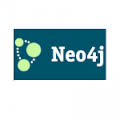Spring Boot uses application.properties or application.yml for configuring the various application level settings. As we are aware that spring boot works with the opinionated default values that are more sensible to your applications. Most of the time you may prefer to override the default values with your own configurations. In this tutorial I am going …
Spring Boot
Spring Data Neo4j 3 REST Exporter – Converting Spring Boot JAR Application To WAR
This tutorial is the continuation of the previous tutorial for building the standalone application using spring boot. This guide walks you through the process of converting a runnable JAR application that was built with Spring Boot into a WAR file that you can run in any standard servlet container. You’ll take a simple Spring MVC web …
Spring Data Neo4j 3 REST Exporter (Java Application)
This tutorial walks you through the process of creating an application that accesses graph-based data through a hypermedia-based RESTful front end. You’ll build a Spring application that let’s you create and retrieve Employee and Address objects stored in a Neo4j NoSQL database (Neo4j Server) using Spring Data REST. You’ll use the non embedded Neo4j for achieving …
Spring Data REST Exporter
This tutorial provides the detailed instruction on how to use Spring Data REST project in your Spring MVC applications to export your JPA entities. The greatest advantage of using the Spring Data REST is that, it easily exports the entities and made available through the HTTP protocol. Using Spring Data REST repository exporter project, you …
Spring Boot 1.0.0.RC5 Released!!
This week Spring IO team has announced that they have released the final released candidate for the Spring Boot 1.0.0 road map. So, the next version will be the final release of the project. Spring Boot project is intended to use the auto configuration of your spring applications instead of developers manually configure the environmental …
Difference Between @Resource, @Autowired and @Inject in Spring Injection
It is very common confusion among the spring developers that what is the real difference between these three (@Resource, @Autowired and @Inject) annotations used for injecting the objects. I have come across this question from our readers so dedicated this post for explaining the main difference between these three annotations. Infact, these three work very …





